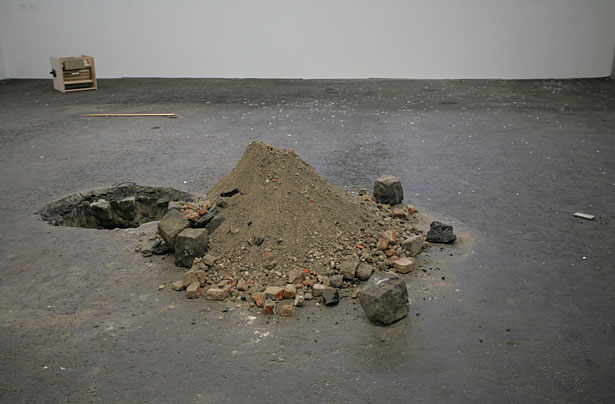Texte zur Kunst 73 (2009).
André Rottmann, e-mail message to author, October 31, 2009.
Dieter Roelstraete, “The Way of the Shovel: On the Archeological Imaginary in Art,” e-flux journal, no. 4 (March 2009).
Filippo Tommaso Marinetti, “The Futurist Manifesto,” reprinted in Fascism, Anti-fascism, and the Resistance in Italy: 1919 to the Present, ed. Stanislao G. Pugliese (Lanham, MD: Rowman & Littlefield, 2004), 27.
Ibid., 28.
I have written elsewhere about the historical convergence of a revived interest in sentiment and sincerity in contemporary art on the one hand, and the post-ironic revival of an ethic of “family values” in the Bush era on the other. See my “Emotion Picture Theory,” AS 173 (2005), and “Great Transformations: On the Spiritual in Art, Again,” Afterall 20 (2008). Many artists active in the field of historiography have also been associated with Romantic Conceptualism; the rehabilitation of many unsung heroes or overlooked and otherwise marginalized Einzelgänger from the recent past has been wholly central to both enterprises, and has resulted in the hero worship of a new cultural figure: the loser as an essentially decent, honest man in the vein of Bush’s own “average Joe” or “regular guy” persona. See also Oliver Stone’s recent re-reading of contemporary American politics in W (2008).
The reference here is to a slim volume of political writings (Kleine politische Schriften) published by Habermas in 1985; it has remained untranslated to this day, but has mistakenly been referred to as “the new confusion”: the untranslatable “Unübersichtlichkeit” is something very different from “confusion,” suggesting something close to “unsurveyability.”
Quoted in Anselm Franke and Hila Peleg, “The Soul, or, Much Trouble in the Transportation of Souls,” in Manifesta 7: Index, ed. Rana Dasgupta, Stephen Haswell Todd, Dan Kidner (Milan: Silvana Editoriale, 2008), 122.
Isabelle Graw, Stefanie Kleefeld, and André Rottmann, “Preface,” trans. Karl Hoffmann, Texte zur Kunst 73 (2009): 122. Their editorial concludes: “It is once again criticism, which under these conditions must lend sense and meaning to the products and make them more credible. . . . The precariousness of the entire art system, which is based on the assessment of value that is not seen in the object itself, and for this reason is built on sand, is now evident to all. We are neither happy, nor do we lament the state of affairs. We instead seek to reflect upon it” (ibid., emphasis added). I, however, am perfectly happy to admit that I am happy with this state of affairs—and one reason for this is suggested by my decision to italicize what I believe to be the crucial fragment in the passage quoted above. The authors of these lines may not have meant to insinuate this, but the implication here is clearly that it is time to revert (or, better still, move onwards) to a system for assessing the value of art as something that is in essence seen in the object itself. One of the challenges lying ahead for criticism, then, may well be located in drawing the outlines of such a system, or in providing its basic methodological and epistemological moorings. This is arguably an exercise in ontology, which I should like to expand upon in a future essay, countering the charge that we live in “post-ontological times.”
Encarta World English Dictionary [North American Edition], s.v. “Realism,” → (accessed April 25, 2009).
Acknowledgments: thanks to Jason Dodge for sharing some of his ideas with some of my ideas; thanks to Monika Szewczyk for sharing all her ideas with all my ideas.
